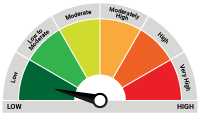The State Of India's Economy
Posted On Saturday, Sep 12, 2020

Given that India is on its road to recovery at a gradual pace; we thought this would be the right opportunity to ask Subbu, his thoughts on some key factors that will drive growth in the coming years. In this exclusive Q&A he shares his insights on government reforms and what it takes to make India a strong Atmanirbhar economy once again.
Q1) 10 years ago India was supposed to be a double digit growth economy. We have struggled to grow at 7%. Has India's long term potential growth weakened after COVID?
India's dream period of growth was between 1991 and 2011 where we averaged +7% real GDP growth. Since then, we have averaged below 6.5%. Few global reasons some of which we alluded earlier, but in India's case it is more self-inflicted. This was the reality before COVID:
A. Banks NPA (Non-Performing Assets) problems, which surfaced in 2015 remained unresolved; the NBFC (Non Banking Financial Company) and Real Estate crisis added to it since 2018. Thus corporate India and the financial system was in trouble.
B. Demonetization and GST affected small firms, individual business owners, unorganized enterprises which showed its impact as higher unemployment, slower consumption and lower investments.
C. The government's balance sheet (known from the fiscal situation) had been deteriorating as lower GDP growth led to lower taxes and thus higher government debt.
COVID, on top of all this is the perfect storm. The lockdown due to COVID has affected companies, banks/ NBFCs, small business and the government.
D. Most importantly, it has impacted the self-entrepreneur, the migrant labourer and to an extent the salaried class as well.
Now the individual balance sheet is also under stress.
Given the above, we at Quantum, are working with this assumption of lower than 6% real GDP growth for the next 3-5 years.
Q2) Can you summarize for us the actions taken by the government to revive the economy? Will they be effective? Do you think the AtmaNirbhar package helped boost the Indian economy and India towards self-reliance?
The package has been disappointing. The provision of free food and increase in MNREGA were the two notable aspects of the package. The liquidity support to SME's through banks was required but the 3,00,000 Cr. amount remains under-utilized, suggesting banks are not implementing it as well.
COVID and the lock-down took away people's incomes. The labourer did not get his work, the street vendor was not allowed to sell, the taxi driver was not allowed to ply, and the shop owner had to keep his store shut.
The real need was to provide people with their lost income. That still hasn't happened. The government is trying to time the roll out of an income stimulus with the opening up, but I am afraid it is already too late.
Q3) Can you share your outlook on the major asset classes like Equity, Debt and Commodities from a macro perspective, in light of our current economic situation?
For debt markets, it has been good and bad. Good for the government, corporates, banks and those invested in bond funds as low interest rates reduced the cost of borrowing and also resulted in higher bond prices.
Bad for the Saver - Fixed Deposit rates, returns on liquid funds have dropped sharply as RBI cut interest rates and infused liquidity.
We expect interest rates to remain low for some more time and it will be prudent for investors to lower their return expectations from liquid, debt funds and bank deposits. We will caution against chasing the extra returns by taking on extra risk. This is not new, regular readers of the Quantum Direct and investors in Quantum Liquid Fund would identify with our safety first approach to investing in debt funds.
Equities - In the short term, markets can deviate from macros. As you see it now, we are in the midst of India's worst economic crisis, but stock markets are near all-time highs. Over the long term, stock markets reflect corporate sales and profit growth which depends on the macro GDP growth. Certain large, strong and well managed companies will benefit due to COVID and gain market share but on a broader level one needs to be cautious.
The crisis has also brought to attention corporate social behaviour. Investors will eventually reward companies who took care of its employees, supported the societal efforts and acted responsibly during the pandemic. COVID-19 will hasten the trend towards greater adoption of ESG in investing.
The beneficiary of uncertainty is Gold. This is why we recommend 10-20% allocation to Gold in your investment portfolio at all times. When times are good and gold price underperforms, as an investor you should be happy! As then your job/business is doing well and so is your equity portfolio. It is when things turn bad, does Gold shine. Gold is India's most liquid asset and can be easily leveraged by households/small businesses when its prices rise.
Q4) Which are the key sectors that you feel will drive the growth of the GDP in the next 1-2 years?
We should be hopeful on Agriculture. Although as a share of GDP it is very low, so it won't have too much of an impact on the numbers. But, given the large population dependent on it, it will be the main sector to drive India out of this mess. Recent reforms announced if implemented well by the states should have a long term impact.
The Government's share of GDP will rise. Given that the private sector and individuals would have lesser resources to invest, the government would need to continue to have a higher spend over the next 1-3 years. It is crucial on how governments use this resource and direct its spending. For the long term, India needs higher spending on infrastructure, health and skill building.
Q5) How do you explain the Rupee against the Dollar strengthening over the recent weeks and months? What are the implications?
If you look at pre-COVID and now, the INR is a tad weaker. But if you look at levels in April and now, the INR has appreciated. So that perspective matters. Over the last 3 months, India has received a huge amount of foreign inflows through FDI and in equity markets. Many large companies have raised capital in the stock markets which has seen heavy foreign investor interest. So in front of this large supply of dollars, the RBI has had to allow the INR to appreciate. India's imports have fallen as well due to low oil prices and low domestic demand.
Over the same period, the US dollar has weakened against all global currencies and thus has against the Indian rupee.
A sustained stronger rupee is good from an inflation perspective as it keeps cost of goods cheaper. But it may go against government's AtmaNirbhar policy, as a strong currency makes imports more attractive on a relative basis.
Q6) What is Ajit's 24-80-20 asset allocation rule? Do you think it's important for investors to follow this in the current market scenario?
So the 24-80-20 rule is 24 months (2 years) of your household expenditure kept aside in a safe investment - it could be hard cash under your mattress, in a savings account, a safe liquid fund, fixed deposits. The key is you don't risk it, don't try to earn high returns on it and should be liquid enough to be available for use at any time you need.
The 24 month rule is very relevant in today's times. Post lockdown, you may lose your job / can't start your business - so you have no income. However, daily family life needs to be supported, EMIs have to be paid, medical emergencies have to be funded. For some, who have a stable job, higher savings balance, no EMIs it may be 6 months; 12 months. But all of us need to create this and you need this 'emergency fund' money available to you at minimum risk. This money cannot be invested in equities.
Once you have set aside the emergency fund, allocate your money 80% in Equities; 20% in Gold.
Editor's Note: Want to know more about the micro or macro-economic outlook from Subbu? Write to us at [email protected]
Or give us a missed call at +91-22-68293807 and we will call you back.
In other news, we are pleased to inform you that we are launching a brand new newsletter Quantum's Debt Market Observer.
*With reference to the latest SEBI guidelines on Multi-Cap Funds, we would like to inform you that this doesn't apply to the Quantum Long Term Equity Value Fund as this is categorized under the ‘Value Fund’ category.
| Name of the Scheme & Primary Benchmark | This product is suitable for investors who are seeking* | Risk-o-meter of Scheme |
| Quantum Liquid Fund An Open Ended Liquid Scheme | • Income over the short term • Investments in debt / money market instruments. |  Investors understand that their principal will be at Low Risk |
* Investors should consult their financial advisers if in doubt about whether the product is suitable for them.
Disclaimer, Statutory Details & Risk Factors:
The views expressed here in this article / video are for general information and reading purpose only and do not constitute any guidelines and recommendations on any course of action to be followed by the reader. Quantum AMC / Quantum Mutual Fund is not guaranteeing / offering / communicating any indicative yield on investments made in the scheme(s). The views are not meant to serve as a professional guide / investment advice / intended to be an offer or solicitation for the purchase or sale of any financial product or instrument or mutual fund units for the reader. The article has been prepared on the basis of publicly available information, internally developed data and other sources believed to be reliable. Whilst no action has been solicited based upon the information provided herein, due care has been taken to ensure that the facts are accurate and views given are fair and reasonable as on date. Readers of this article should rely on information/data arising out of their own investigations and advised to seek independent professional advice and arrive at an informed decision before making any investments. Please visit – www.quantumamc.com/disclaimer to read scheme specific risk factors.
Related Posts
-

Debt Monthly for January 2026
Posted On Thursday, Jan 01, 2026
Navigating 2026: India’s Bond Market in a Changing Global Landscape
Read More -

Debt Monthly for December 2025
Posted On Tuesday, Dec 02, 2025
As we approach the end of the calendar year, we find ourselves at a pivotal moment, with the market split on the likelihood of an upcoming rate cut.
Read More -

Debt Monthly for November 2025
Posted On Tuesday, Nov 04, 2025
October 2025 in a Nutshell: Monetary Policy and Demand–Supply
Read More



